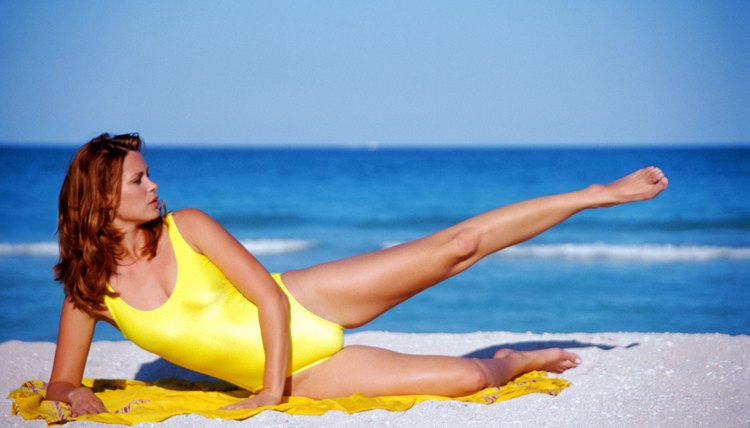Geriatric Exercises for Balance & Gait Training

As you get older, factors such as decreased muscle mass and strength, medical conditions, vision impairments or equilibrium imbalances can affect your walking ability and increase your risk of falling. Regular balance and gait exercises, along with strength training, reduce the risk of falls and contribute to overall better health. Consult a physician before starting any new exercise program to discuss your current medical conditions and walking ability.
Importance of Exercise
The Stanford Geriatric Education Center reports that as many as 5.8 million American adults over the age of 65 report falling in the previous month. In an average year, there are 340,000 hospital admissions due to hip fractures from falls. An August 2012 study published in “BMJ” looked at the impact of regular balance and strength-training exercises on older patients. In their study, researchers found that adults participating in regular strength and balance programs saw a 31 percent decrease in the rate of falls.
Balance Exercises
For a basic balance exercise, position your body to the side of a chair. Place one hand on the chair for support. Stand with your feet shoulder-width apart. Shift your weight to your left foot and slowly raise your right foot. Hold this position for up to 30 seconds, maintaining balance. Return to the starting position and repeat with the left side. As it becomes easier, step away from the chair and try doing it without the additional support. As you progress, add movement to your raised foot. For instance, try writing your name with the toe of your left foot while balancing on your right.
If your walking is currently unstable, begin these gait exercises with a partner or near a wall with a bar for support. Begin with a simple heel-to-toe walk along a 15-foot line. Simply take a step with your left foot and then another with your right, placing your right foot directly in front of the left foot. Other exercises include step-overs, sidestepping and the figure eight. For these exercises, place two soft objects on the floor about 3 feet apart. For step-overs, simply step over each object. For sidestepping, lift your foot and take a sideways step over the object. For figure eights, walk around the objects in a figure-eight pattern.
Strength Training
Strength-training programs to assist in walking focus on the muscles of the lower body. Examples include knee extensions, calf raises, ankle circles, side hip raises, leg raises, lunges and partial squats. The side hip raise, for example, strengthens your hip muscles to assist in side stepping and gait balance. To perform side hip raises, stand behind a chair and hold on for balance. Lift your left leg slowly out to the side as far as you can and then return to the starting position. Repeat for eight to 12 repetitions. Do the same with your right leg. For a variation, you can also lie on the floor on your side and raise your leg upward. As these exercises become easier, add lightweight ankle weights for increased resistance.
References
- BMJ: Integration of Balance and Strength Training Into Daily Life Activity to Reduce Rate of Falls in Older People (The LiFE Study): Randomised Parallel Trial
- Stanford Geriatric Education Center: Falls, Gait and Balance Disorders in Older Adults: Assessment and Interventions
- MayoClinic.com: Slide Show: Balance Exercises
- American Council on Exercise: Designing Balance Exercise Programs for Older Adults
- Eldergym: Falls and the Elderly
- Eldergym: Leg Exercise for Seniors and the Elderly
- Eldergym: Hip Arthritis Exercises for Seniors and the Elderly
Writer Bio
This article was written by the CareerTrend team, copy edited and fact checked through a multi-point auditing system, in efforts to ensure our readers only receive the best information. To submit your questions or ideas, or to simply learn more about CareerTrend, contact us [here](http://careertrend.com/about-us).
